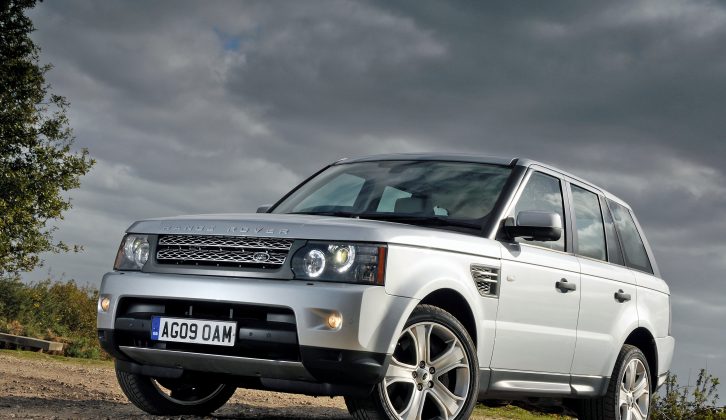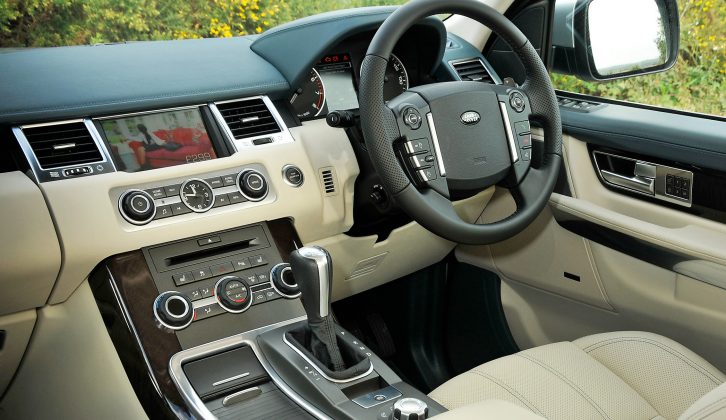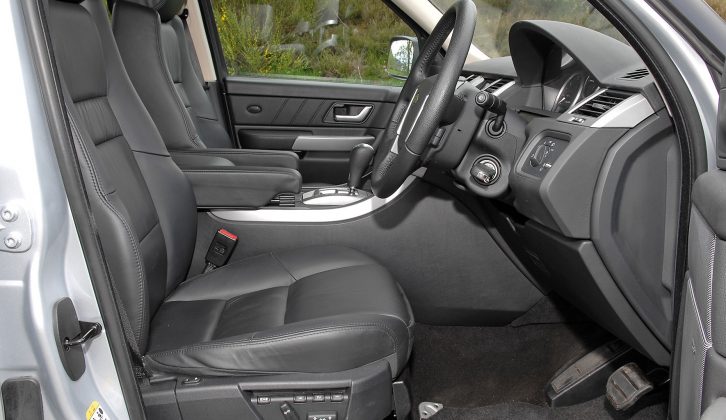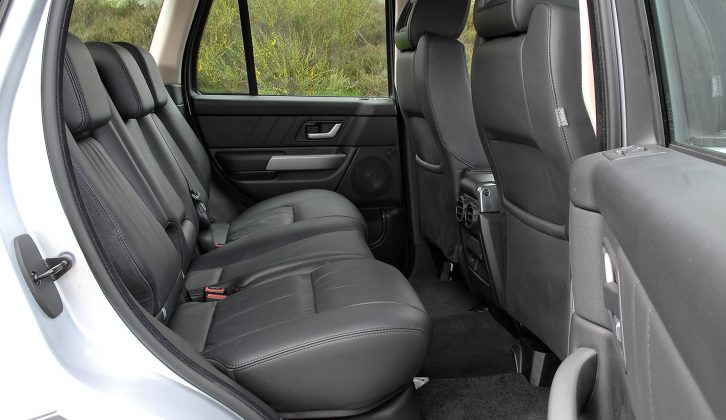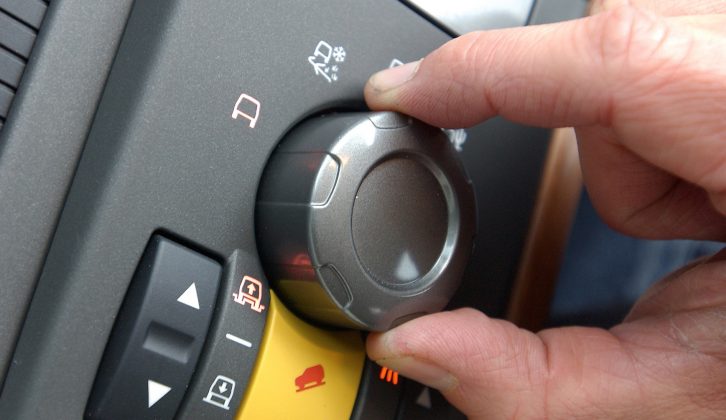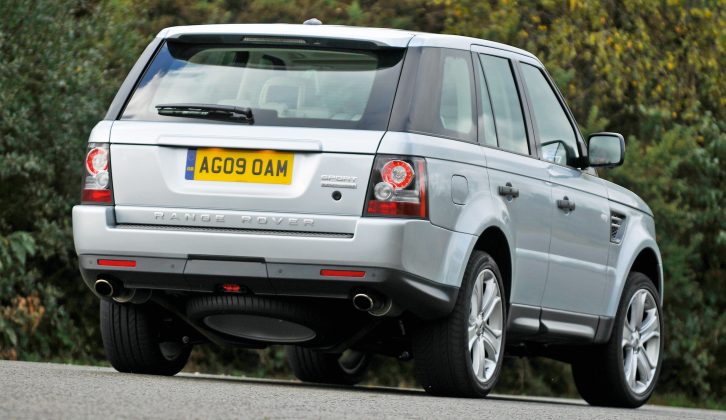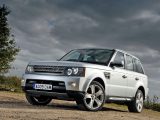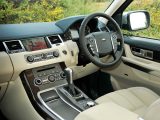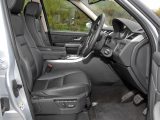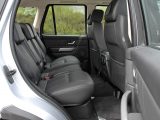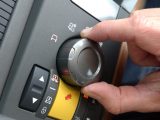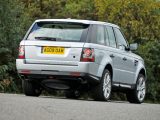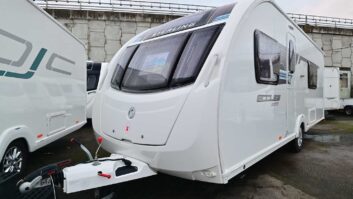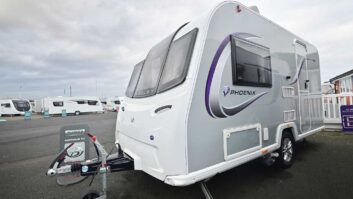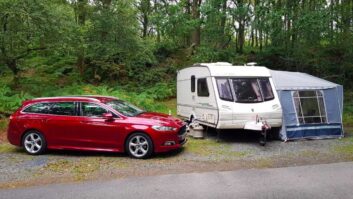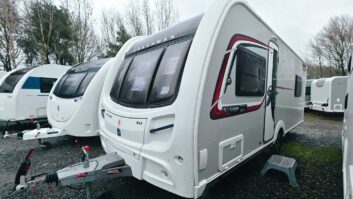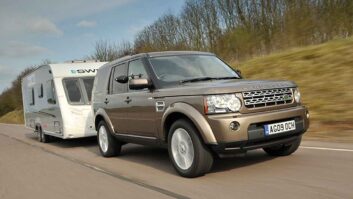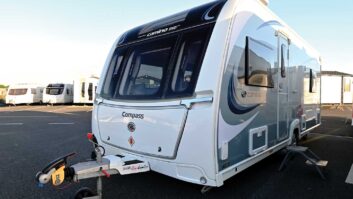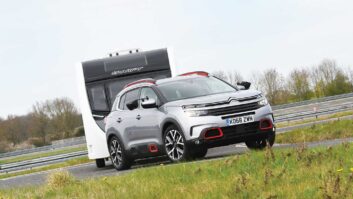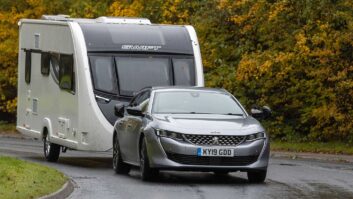The Range Rover Sport is a stripped-down, more athletic version of the Range Rover, targeted squarely at the BMW X5/Porsche Cayenne market. The Sport moniker is a bit of a misnomer; yes, it feels sporty compared to its big brother, but then so does everything else. It’s not for hot laps of Brands Hatch.
Underpinnings are largely a blend of Land Rover Discovery and Jaguar parts, screwed together with, we are told, a focus on improving reliability. So far that appears to be true. Certainly the Sport has not achieved anything approaching the poor reputation of the Discovery 3. They don’t get the same kind of abuse though: most Sports are used primarily as road cars, with only the odd excursion into fields – where they do excel when called upon.
Model history
The Range Rover Sport was launched in 2005 with two petrol V8 engines – a 295bhp 4.4 and a supercharged 4.2 with 390bhp. But of more interest to caravanners is the 2.7-litre turbocharged V6 diesel. Don’t be put off by the 190bhp – the important figure is a healthy 324lb ft of torque. All the above, in fact all but the very last Sport models, come with a no-option six-speed automatic gearbox.
A 3.6-litre diesel V8 was added to the range in 2007, boasting 271bhp and an obscene 472lb ft of torque. Even better, it can return 25mpg, compared to the TDV6’s 27mpg. At this point the normally aspirated petrol V8 was dropped.
The engine range was further revised for the 2010 model year. Capacity of the supercharged petrol V8 was raised to 5.0 litres with power going up to 503bhp with a negligible fuel consumption penalty, and the TDV6 was upped to 3.0 litres. This efficient new engine boasted 241bhp and 442lb ft torque, but actually improved on the 2.7’s fuel consumption by about 10%. From July 2011 there was also the SDV6 3.0 diesel, which came with further engine economy refinements and an eight-speed automatic gearbox. It is rated at an average of 32mpg.
As you might expect from a premium Land Rover product, spec is high on even the basic ‘S’ models. All Sports get full-time four-wheel drive, electronic air suspension with Terrain Response, automatic climate control and cruise control, and 17in alloys. Not enough? The SE adds rear parking sensors, leather seats, Xenon headlamps and 18in alloys, or with HSE you get too many electrical gadgets to list, but including electric front seat adjustment, plus 19in alloys and metallic paint. HST, available on the TDV8 and supercharged cars, gives you a hand-polished oak interior, electric sunroof and 20in ‘Stormer’ alloys.
Trouble spots
Few major problems have come to light so far, and most troubles seem to be related to skimped maintenance or abuse. That makes proper forensic inspection of the service history – not just counting the stamps – even more important than usual. Do the records speak of a car that’s been properly cared for? Has it been serviced by specialists or just the local garage of late?
There are also clues to past ownership in the extent of any damage to the wheel rims, which are vulnerable to kerbing due to the low-profile tyres. If badly damaged you’ll need upwards of £350 for a new wheel. There’s a test you can carry out to make sure the air suspension is functioning correctly. Hold the suspension button to lower for about 10 seconds to lock it in ‘low’. Then drive off. When you reach about 10mph the suspension should lift automatically. If it doesn’t, there’s a problem you don’t want to pay to fix.
Inevitably with such a complex car there’s potential for electrical gremlins, so try everything that has a switch. Don’t be rushed or worry about annoying the seller – it’s your money that’s at stake. And if it’s a dealer, that’s their job. Unusual items you might forget are the fuel gauge – if it’s not working it’s probably because of corroded contacts on top of the fuel tank – a £400 job to drop the tank to gain access. Also headlight bulbs – new ones are more than £100 each. Listen for suspension clonks over bumps, and have a good look underneath the car for damage. Though few of these are used off-road, you don’t want that rare one that has been scraping its floor on rocks. Finally, check that the tailgate opens and closes properly, and that there’s no flexing of the hinge mounting points.
Verdict
Possibly Land Rover’s best-looking product, the Sport is near enough as capable as its counterparts but handily that little bit smaller, even than a Discovery. Universally praised by anyone who has towed with one, there’s little they won’t shift. Residuals have been good so far. The other big plus point is that they appear to be more durable and less fault-prone than a Discovery.
Our top choice would be the TDV8 3.6. Yes, the TDV6 is perfectly good for towing duties, but if you can stretch to the V8 then it would be almost rude not to. A real brute in the best possible connotation of the term, and it will also always be easy to find it a new home.
However, we would avoid the supercharged 4.2 version. It is simply complete overkill – and that’s just the fuel consumption, likely to be in the mid-teens when you’re towing. They are also, for reasons probably not unconnected with macho posturing, as expensive as equivalent diesel V6s.
What you need to know
We are looking at 2005-2013 models. Here are some useful figures (for a 2010 V50 2.0 D4):
- Kerbweight 2675kg
- Towing limit 3500kg
- Towball limit 150kg
- 85% match 2274kg
If you need to fit a towbar to a used Range Rover Sport, a Witter fixed towbar will be £165.79 and a Thule detachable towbar will come to £272.50, fitting extra (quotes from PF Jones).
Try everything that has a switch – don’t be rushed
